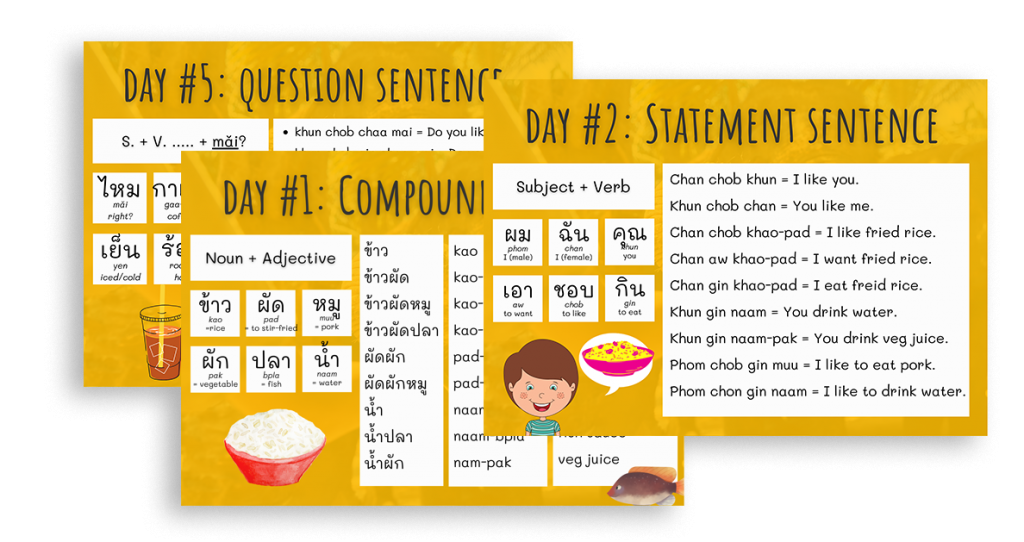Whether you’re attending a Thai language class or just learning Thai on your own, being curious or being enthusiastic to learn more is a great personality to have as a student.
In This blog post, I gathered 10 sentences for you to use in order to expand your Thai knowledge and to ask important questions.
Tips for learning a new language
When I was learning German years ago, I remember having so many questions and was always eager to learn more. Here are some tips for you and I hope to share with:
- When learning a new word, ask them to spell the word and pronounce it for you.
- Ask your friends or teacher to provide you with examples of how to use new words
- Ask them to correct your pronunciation, writing, or your sentences
Below, you will see the 10 sentences I highly recommend using while learning Thai language.

Join 5-day Easy Thai challenge
Get a series of short lessons via email to master basic Thai sentences. Best for beginners.
10 sentences for Thai learners to use in the class.
There are many ways to say:
ช่วยพูดอีกครั้งได้ไหม
(chûuay pôot èek kráng dâai măi)
ช่วยพูดอีกทีได้ไหม
(chûuay pôot èek tee dâai măi)
ช่วยพูดใหม่ได้ไหม
(chûuay pôot mài dâai măi)
—
- อีก (èek) means “more or again”
- ครั้ง (kráng) means “time” as well as ที (tee)
- ใหม่ (mài) in this case, means “again” when used with verbs.
ช่วยอธิบายให้ฉันฟังหน่อย
(chûuay à-tí-baai hâi chăn fang nòi)
Of course, if you’re a man, you should replace the word ฉัน (chǎn) with ผม (pǒm)
—
- อธิบาย (à-tí-baai) = to explain
- ให้ฉัน (hâi chăn) = for me (female speaker)
- ให้ผม (hâi pǒm) = for me (male speaker)
- หน่อย (nòi) is a particle used with the word ช่วย (chûuay) to make the sentence extra polite.
คำว่า “…” ภาษาไทยคืออะไร
(kam wâa “…” paa-săa-Thai keu à-rai
ภาษาไทยพูดว่าอะไร
(paa-săa tai pôot wâa à-rai)
You can put any word you want to know in the space.
—
- คำ (kam) = word
- คือ (keu) = is/am/are
- อะไร (à-rai) = what?
คำว่า “…” สะกดยังไง
(kam wâa “…” sà-gòt yang-ngai)
You can put any word you would like the person to spell in the space.
—
- คำ (kam) = word
- สะกด (sà-gòt) = to spell
- ยังไง (yang-ngai) = how?
ช่วยยกตัวอย่างให้หน่อย
(chûuay yók dtuua-yàang hâi nòi)
—
- ยก (yók) normally means “to lift” but in this case, it means “to give”
- ตัวอย่าง (dtuua-yàang) = examples
That’s it!
I hope you can use these 10 sentences to improve your Thai. If you have any question, please comment below or write me at krusmuk@bananathaischool.com
Much love,
Kru Smuk



